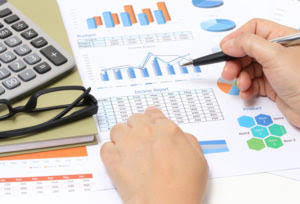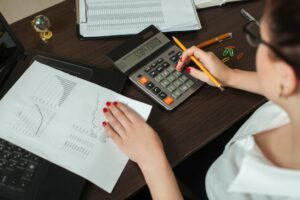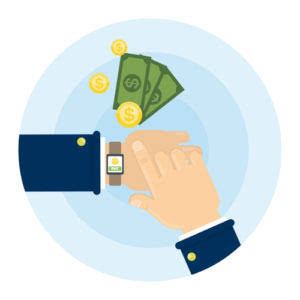What Is a Balance Sheet? Definition, Explanation and Format Examples

For practical reasons, it is normal to set a minimal cost below which the item is treated as an expense and charged to the profit and loss account in the year of purchase. For example, a stapler may have a life of more than one year but because of the minimal cost will be treated as an expense and not a fixed asset. Types of fixed assets common to small businesses include computer hardware, cell phones, equipment, tools and vehicles. A bank statement is often used by parties outside of a company to gauge the company’s health.
- Conversely, they could also be presented as the gross value of total fixed assets along with the accumulated depreciation recognized to date, aggregated to their net value.
- Asset impairments are less likely towards the end of an asset’s useful life, because ongoing depreciation has reduced its carrying amount to a great extent.
- Most businesses, regardless of size, require some amount of Property, Plant, and Equipment to operate.
- All these are classified as current assets because the company expects to generate cash when they are sold.
- The company’s inventory also belongs in this category, whether it consists of raw materials, works in progress, or finished goods.
- Besides the materials and labor required for construction, this account can also contain architecture fees, the cost of building permits, and so forth.
Classification Of Fixed Assets

The part of the cost that is charged to operation during an accounting period is known as depreciation. Balance sheets of small privately-held businesses might be prepared by the owner of the company or its bookkeeper. On the other hand, balance sheets for mid-size private firms might be prepared internally and then reviewed over by an external accountant. Assets are what the company owns, while liabilities are what the company owes. Shareholders’ equity is the portion of the business that is owned by the shareholders.
Balance Sheets Are Subject to Several Professional Judgment Areas That Could Impact the Report
There are several accounting transactions to record for fixed assets, which are noted below. Some of these transactions will need to be repeated several times over the useful life of an asset. Basically the grouping of fixed assets allows common depreciation policies to be applied. For example, computer equipment might be one grouping and the policy might be to depreciate all items in that group over 3 years.
Drafting software, service & guidance

An accounting loss results from expensing a revenue-generating asset instead of capitalizing it and thus, not creating any future value for the company. The accumulated Depreciation account will show a debit balance as a result. As business accounts are usually prepared on an annual basis, it is common to calculate depreciation only once at the end of each financial year.
In these instances, the investor will have to make allowances and/or defer to the experts. The register is usually subdivided into the various categories so that fixed assets are grouped together by nature, use or function. Costs forming part of buildings fixed assets typically include the following. Fixed assets or long term assets have a long life and are for use within the business and not held for resale.
In contrast, the income and cash flow statements reflect a company’s operations for its whole fiscal year—365 days. This practice is referred to as “averaging,” and involves taking the year-end (2019 and 2020) figures—let’s say for total assets—and adding them together, and dividing the total by two. This exercise gives us a rough but useful approximation of a balance sheet amount for the whole year 2020, which is what the income statement number, let’s say net income, represents. In our example, the number for total assets at year-end 2020 would overstate the amount and distort the return on assets ratio (net income/total assets). A fixed asset is an item having a useful life that spans multiple reporting periods, and whose cost exceeds a certain minimum limit (called the capitalization limit). It is classified as a long-term asset, since it will remain on your books for an extended period of time.

Double-declining balance method
- However, personal vehicles used to get to work are not considered fixed assets.
- For instance, if a business entity uses a cost model, the accumulated depreciation will be deducted from the initial cost of fixed assets at regular intervals.
- A liability is any money that a company owes to outside parties, from bills it has to pay to suppliers to interest on bonds issued to creditors to rent, utilities and salaries.
- While stakeholders and investors may use a balance sheet to predict future performance, past performance does not guarantee future results.
Depending on the company, this might include short-term assets, such as cash and accounts receivable, or long-term assets such as property, plant, and equipment (PP&E). Likewise, its liabilities may include short-term obligations such fixed asset accounting as accounts payable and wages payable, or long-term liabilities such as bank loans and other debt obligations. This balance sheet also reports Apple’s liabilities and equity, each with its own section in the lower half of the report.


For example, the transport and freight costs of delivering the equipment to the factory, and the installation and set-up costs incurred in commissioning the equipment are part of the total fixed asset cost. In contrast interest on debt used to finance the purchase of fixed assets and training costs for employees are not normally included as they are not a cost of getting the asset ready for use. This financial statement lists everything a company owns and all of its debt. A company will be able to quickly assess whether it has borrowed too much money, whether the assets it owns are not liquid enough, or whether it has enough cash on hand to meet current demands. As stated above, various methods may be used to calculate calculate depreciation for fixed assets. It depends on the nature of an organization’s business which method best reflects actual use and the decrease in value of their fixed assets.
Fixed asset examples
Estimated residual value is also known as the salvage value or scrap value. This is the expected value of the asset in cash at the end of its useful life. The loss on an asset that arises from depreciation is a direct consequence of the services that the asset gives to its owner. So Shanghai automobiles want to decide whether they should buy an apex automobile or not. So for that, Shanghai automobiles want to ensure that the assets of the apex automobile are in good condition.
- Under the declining balance method, a fixed percentage of the remaining value at the end of each year is calculated and deducted from the fixed asset.
- These assets also have different time frames in which they are held by a company.
- There can be more fixed assets of a company depending on the nature of a business.
- That said, all assets are the same in that they have financial value to a business (or individual).
- Additionally, a company must usually provide a balance sheet to private investors when planning to secure private equity funding.
- A fixed asset roll forward is typically created quarterly and/or annually.
- It represents the assets owned by a business entity, liabilities owed, and the business’s equity.